Chanderi: Through the Portals of Time
A Tale of Two Gateways, Where Stone Remembers and Silence Speaks
Prologue
There are towns that wear their history lightly, and then there is Chanderi. Cradled amid the hills of central India, this ancient settlement does not merely preserve its past; it breathes through it. Here, history is not a distant echo but an ever-present companion, woven into lintels, whispered through latticed jharokhas, and engraved upon the massive stones of its gates.
This is a tale of two such gates, Delhi Darwaza and Khooni Darwaza, each a silent witness to Chanderi’s layered chronicle of ambition, artistry, conquest, and courage. These portals are more than architectural remnants; they are keepers of legend, guardians of memory, and sentinels of a town where time folds upon itself. Through them, we glimpse not just the grandeur and grief of bygone eras, but also the delicate interplay between movement and stillness that defines Chanderi to this day.
Delhi Darwaza: The Lion’s Gate and the Whisper of Elephants
Rising stoically from the dust-blown edge of Chanderi’s northern limits, the Delhi Darwaza serves as more than just an entrance, it is a sentinel of memory, a relic of regal ambition forged in sandstone. This gateway, commissioned by Sultan Dilawar Khan Gauri and completed under Sultan Hoshang Shah in 1411 CE, once welcomed emissaries and armies alike, its arched threshold facing the ancient road to Delhi, a route as storied as the city itself.
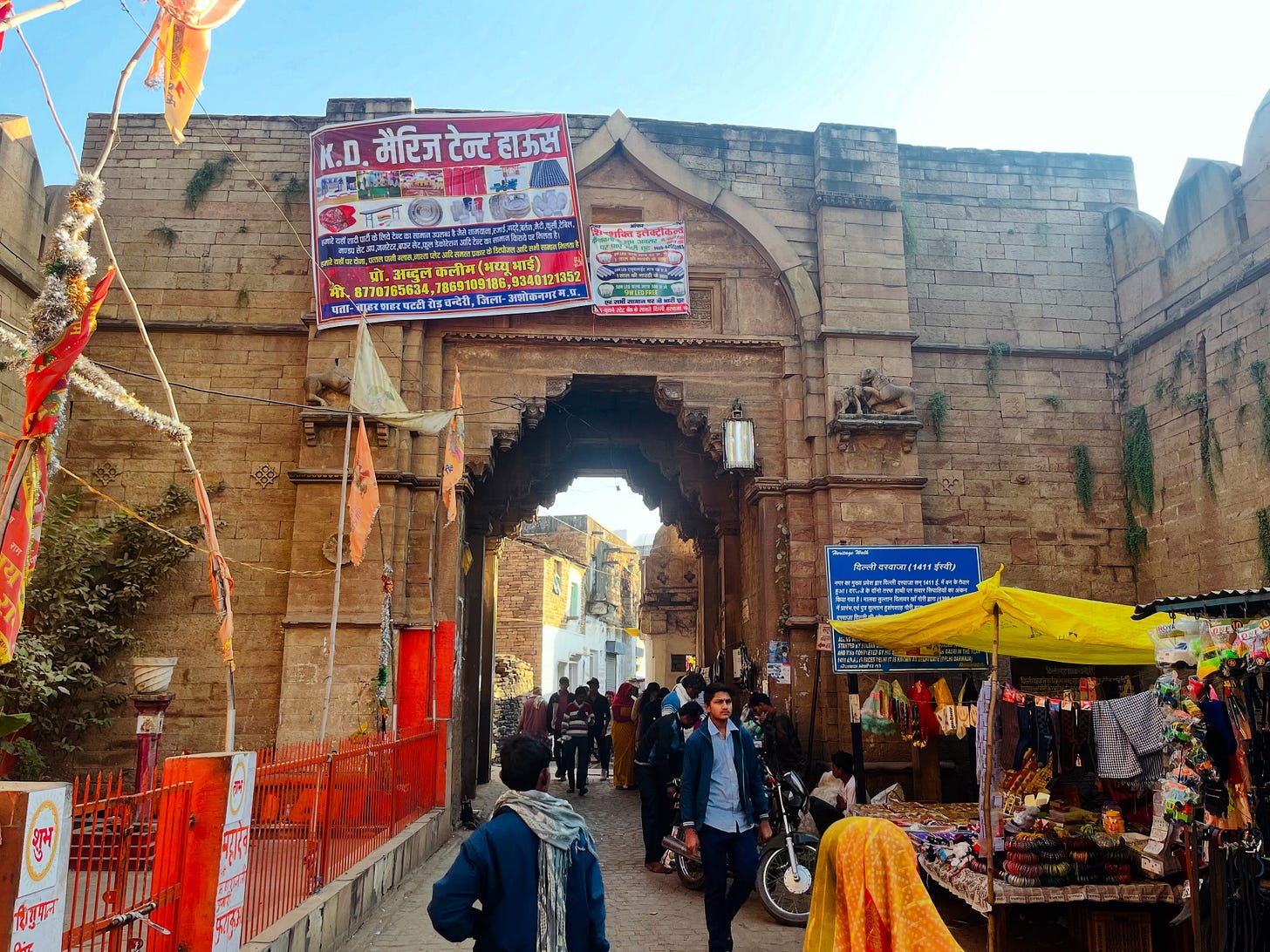
But it is not only the structure’s scale or orientation that commands reverence. Carved into its very skin are enigmatic reliefs, elephants in fierce combat with lion-like beasts, caught mid-lunge, mid-trumpet, mid-roar. In a curious inversion of natural order, the predators loom larger than the pachyderms, overpowering them in scenes that speak of chaos, control, and cosmic symbolism. Trunks curl around feline limbs in desperate resistance, and in these frozen gestures one senses a mythic struggle, the eternal push and pull between primal force and human endeavor.
These creatures evoke the yali, or vyala, guardians of ancient Indian temple lore. Particularly reminiscent of the simha-vyala, the lion variant, they once adorned temple thresholds to ward off evil, offering protection through a mythology whose roots run deep, yet remain shrouded in mist. Here, transplanted from temple sanctums to a sultanate’s stronghold, they take on new meaning, still protectors, but now also symbols of cultural confluence and artistic reinvention.
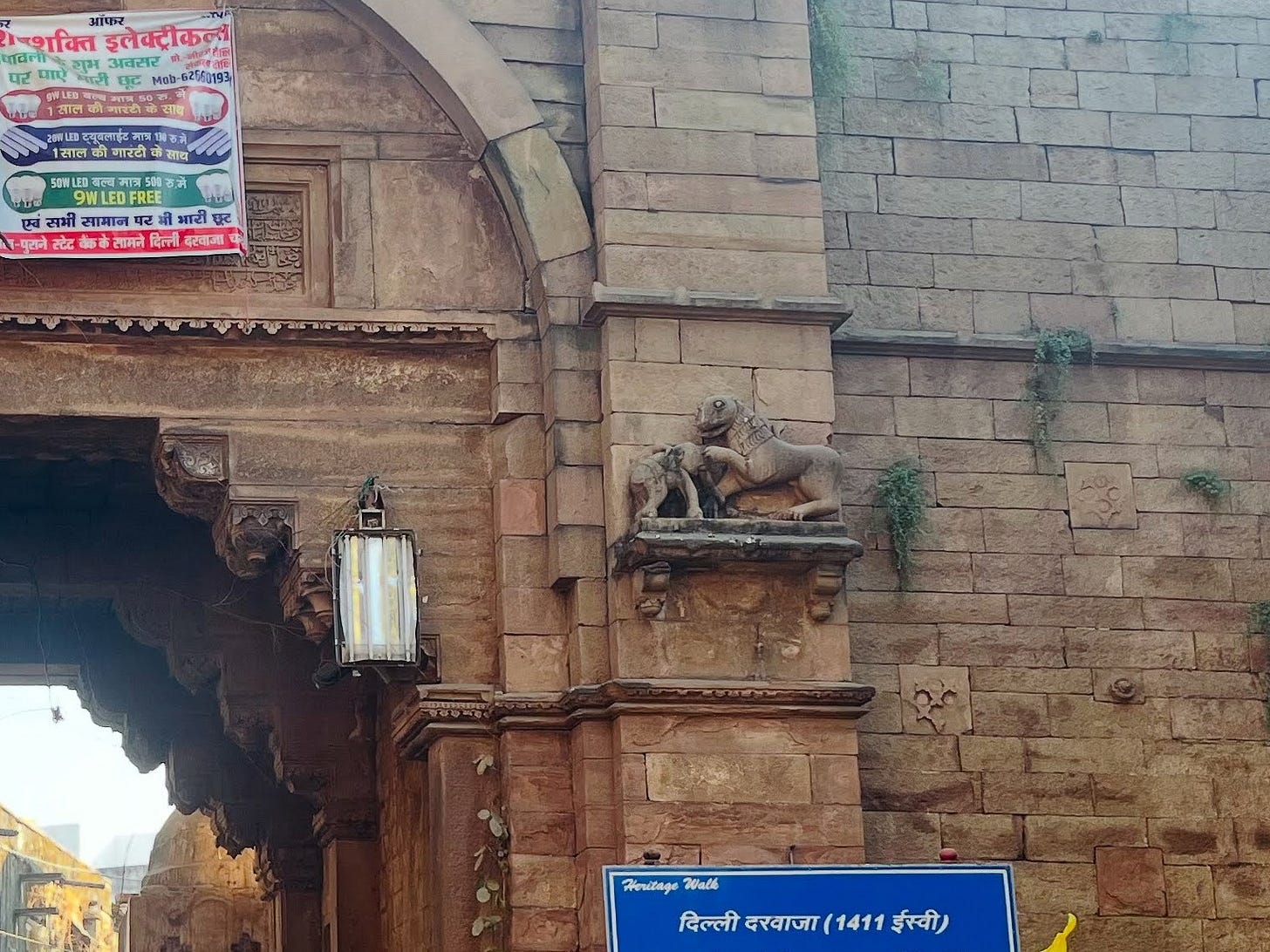
Time, however, has not spared them. The carvings, once razor-sharp, have begun to fade. Their edges blur beneath centuries of rain, sun, and indifference. The gate stands in noble silence, its silent guardians still locked in their timeless struggle, but for how much longer? Without care, without restoration, these spectral sentinels may vanish into memory, their stories fading like incense on the wind.
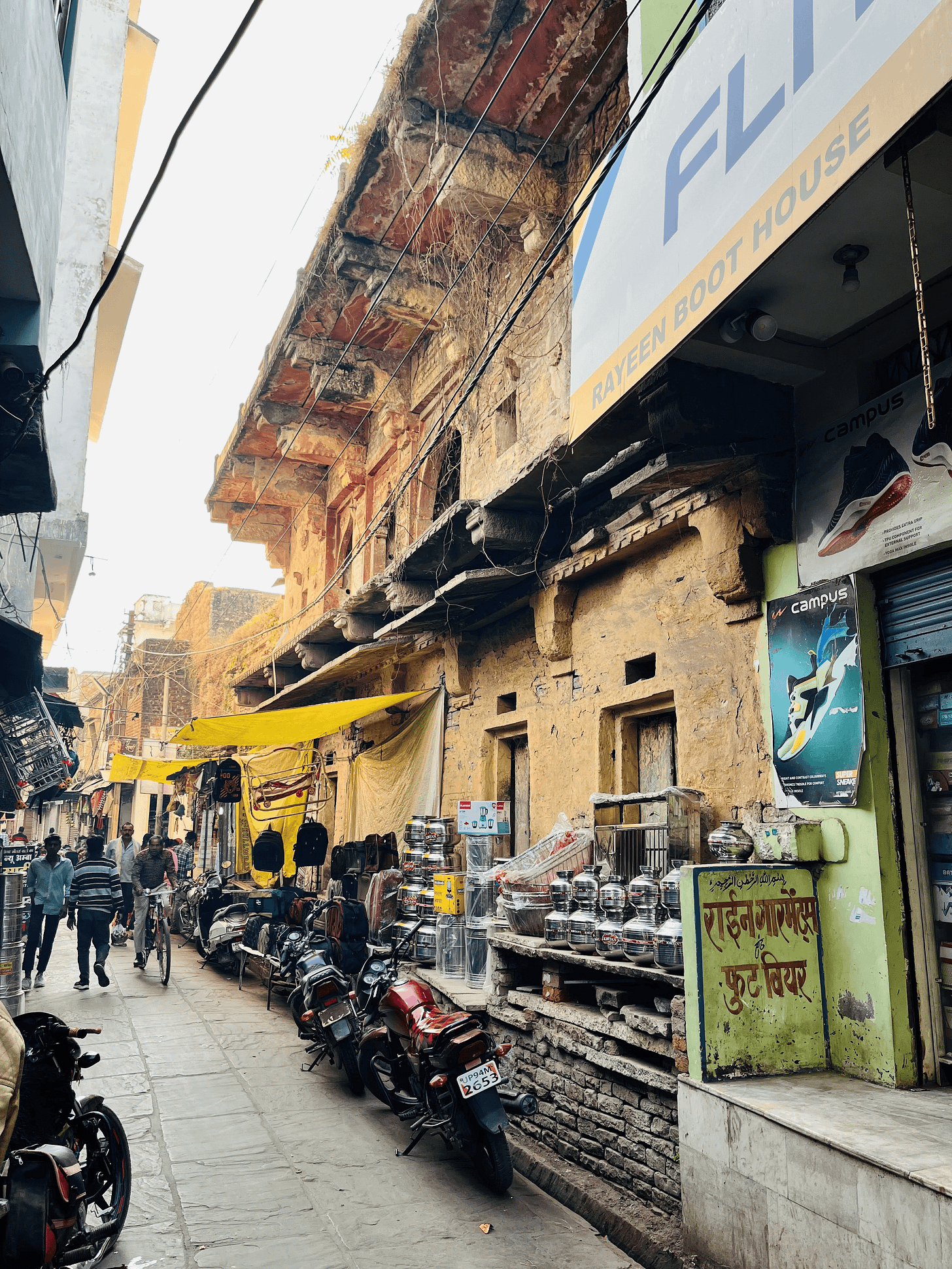
To walk beneath Delhi Darwaza is to cross more than a threshold. You step not merely into a town, but into a living palimpsest. The past clings here, in the echo of footfall on stone, in the scent of masalas from ancient kitchens, in the glance of a window that hasn’t changed its shape in centuries. Mopeds may now hum where elephants once marched, but the rhythm of the streets is still governed by history. Chanderi does not just welcome you, it absorbs you, reshapes your silence, and whispers secrets you didn’t know you came looking for.
Khooni Darwaza: Where Valor Bled and Shadows Endure
High within the fortified embrace of Chanderi lies a gateway that breathes grief, the Khooni Darwaza, or “Bloody Gate,” an ominous moniker earned on a January morning in 1528. The air here is thick, as if still tasting of fire and fear, of steel clashing against stone, of vows sealed not with ink but with blood.
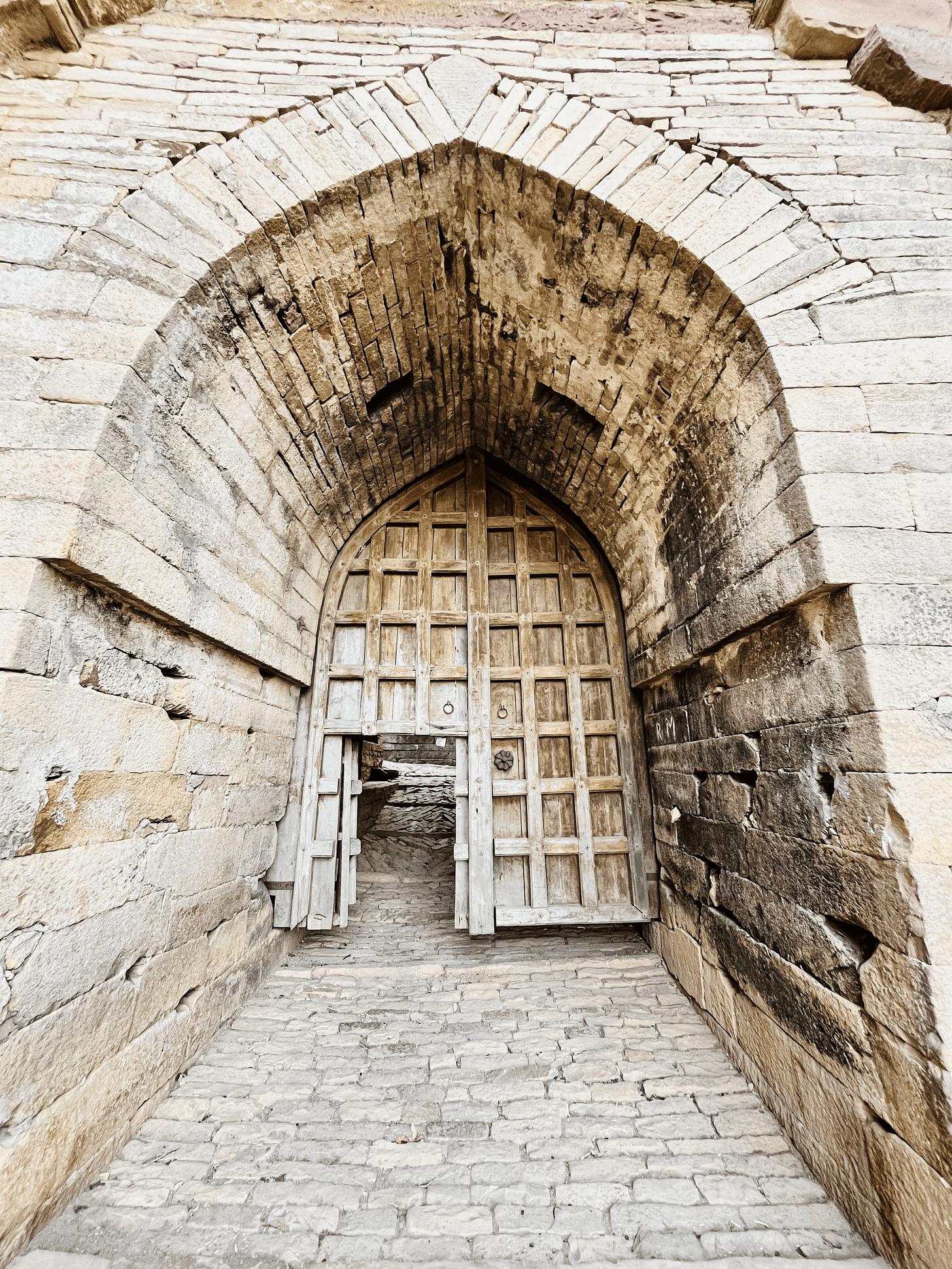
This gate, once stormed by Babur’s troops during a fierce assault on Chanderi Fort, anchors one of the most dramatic episodes etched in the Baburnama, the emperor’s vivid, unflinching memoir. A miniature painting, created in the ateliers of Babur’s court, captures that day like a moment suspended in battle-ridden amber, soldiers surging, arrows flying, defenders resisting from battlements above. The siege tightens around a narrow, sloped passage as if fate itself had narrowed the path to force its reckoning.
Here, Medini Rai, loyal to Rana Sangha and lord of Chanderi, stood his final ground. With just a few thousand warriors, he defied the Mughal juggernaut. When the walls were finally scaled, the defenders did not surrender, they retreated inward, toward their last sanctuary, to prepare for sacca, the ultimate resistance. The women, refusing capture, chose jauhar, a pyre-lit defiance beside the shadowed waters of Johar Tal. The warriors, shedding their armor and mortal hesitation, fought unclothed, face to face with death in one final, futile blaze.
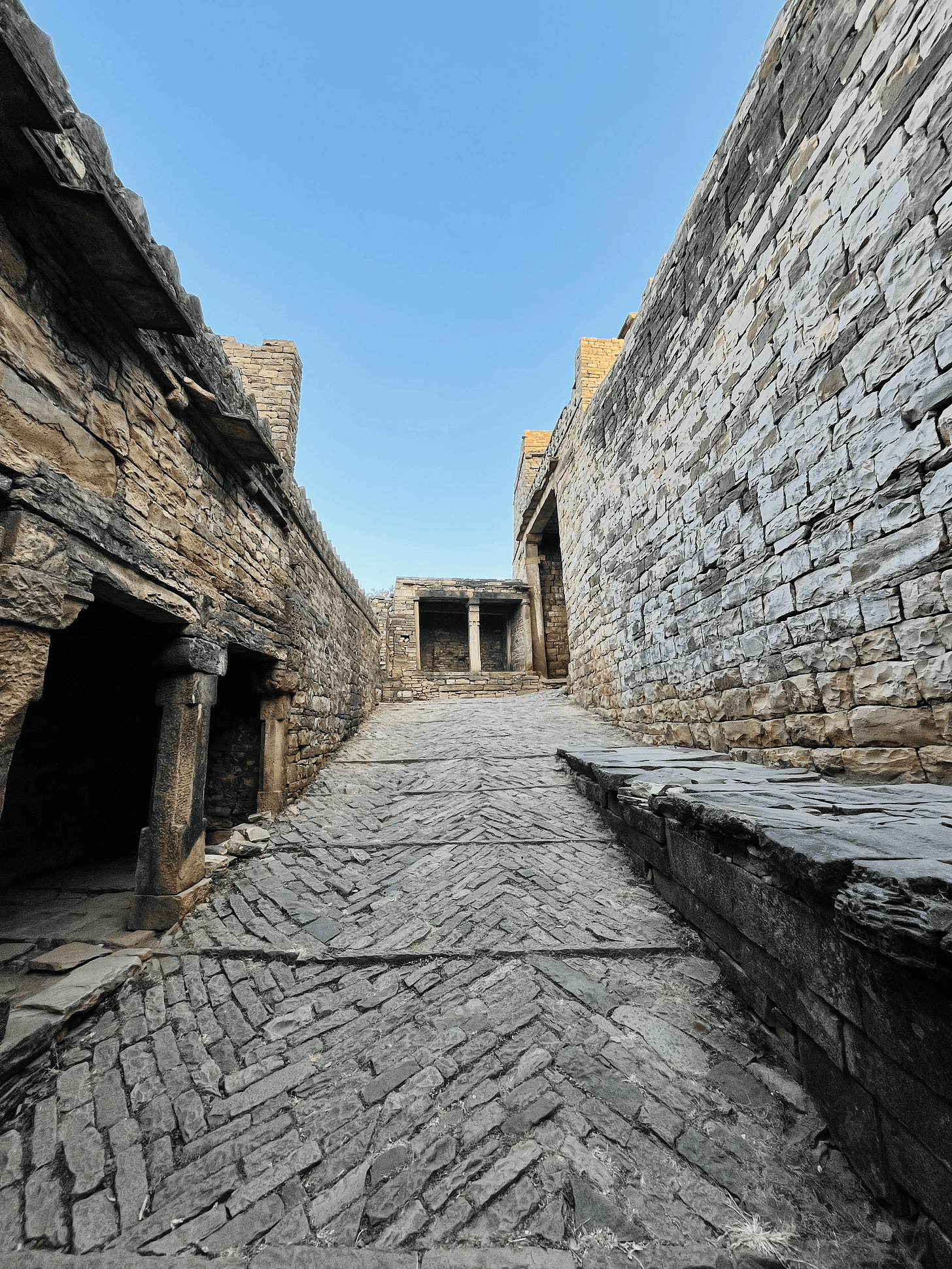
Standing before the Khooni Darwaza, one does not merely look upon stone. One feels it. The weight of memory, the density of sacrifice, the collective silence of hundreds who made their final stand, these linger, heavy as monsoon air before the storm. The gate does not invite; it watches. It does not welcome; it remembers.
Its surface still bears the echoes of siege, the faint scars, the discolored patches, the subtle chips in stone that form a language beyond words. A language of loss, and of legacy.
Epilogue: Where the Past Walks Beside You
Chanderi is no ordinary town. Its doorways are not just passages but portals, thresholds where myth meets memory, where valor intertwines with artistry, and where every step pulls you further into a past that refuses to rest quietly in the pages of history. These darwazas do not merely stand, they speak. And if you pause, listen, and pass beneath them with respect, you may find that they still have much to say.





Listening to the stories of sacrifice and valor told by the fading stones is mesmerizing and terrifying at the same time. The Johar ultimate sacrifice of women is sad yet brave. I feel drawn to Chanderi more and more through these stories. I hope to visit this place in winters this year.